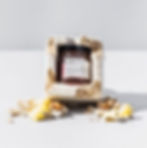Mushrooms - the ultimate green packaging alternative to plastic
- moekodesign
- Jun 16, 2021
- 3 min read
Updated: Jan 15, 2024
_PACKAGING
LOCATION: WORLD
Packaging derived from mushrooms and organic plant waste is making waves as brands look to use more environmentally friendly alternatives to synthetic plastic packaging. This innovative material was developed by Ecovative in and its called Mushroom® Packaging (aka MycoComposite™).
An alternative to protective packaging such as styrofoam, this packaging material is made of fungus roots called Mycelium and agricultural waste such as hemp and corn husks.

Naturally Grown Packaging
Instead of being manufactured into shape this packaging is actually grown to shape in custom 3D moulds. Without the need for light, water or chemicals, the mycelium grows through and around the organic plant waste binding them together like glue to form a solid object. The packaging grows in 5-7 days. When it has reached the desired shape, it is removed from the mould and heat treated to dry out, kill spores, and to stop the growth process.

The result is a strong, light-weight, entirely natural and compostable packaging material which naturally breaks down into the earth without pollution.
The great thing about mushroom packaging is that it’s protective, meaning we don’t need to use tons of styrofoam or plastic bubble wrap to protect our goods.

A solution to the plastic problem
The primary purpose of mushroom packaging is to provide a greener and more sustainable alternative to non-biodegradable single-use protective packaging made out of plastic and styrofoam.
Today we know that plastics are creating significant harm to our environment. As we continue our consumption-oriented society it's becoming more crucial to find and use viable alternatives that reduce plastic waste and are free of all the problematic environmental issues.
Brands making a positive impact
Sustainable packaging is becoming an increasingly high priority for both consumers and brands.
Although mushroom packaging has been around for quite some time (it was invented in 2009), it's gaining a lot more ground and we're starting to see a lot more mushroom packaging being used as companies step up to tackle the waste problem.
It’s seen as the perfect alternative to polystyrene packaging used for electronics and other delicate items, and it is also used as high-end packaging for luxury products. Evocative was recently featured in Vogue in an article titled, How Mushrooms Could Help Solve the Beauty Industry's Waste Problem.
Mushroom packaging has a very interesting sculptural vibe to it with a natural, fibrous texture. From a visual perspective it certainly speaks sustainability and it also protects your product in an awesome way.
Here are some examples of companies showing off their products in an eco-friendly way.
Sustainability Advantages
100% Biodegradable & Renewable Material
“Up-cycling” – Waste Becomes Raw Material The materials used in mushroom packaging come entirely from nature and return entirely to nature at the end of their useful life. Mushroom® Packaging is a gold certified Cradle to Cradle product.
Compostable After being used for its intended purpose, it can be reused as a box (mushroom packaging does NOT biodegrade in use), added to a home compost, ‘replanted’ in your garden by breaking up your packaging and adding it to the soil or disposed of in a compostable recycling bin. It decomposes within 30 to 90 days. The natural materials in mushroom packaging will actually add nutrients to the soil.
Low Energy Consumption Using mushrooms inherent growth power, packaging can be produced with minimal energy use.
Custom-Molded The great thing about mushroom packaging is that it can be grown into virtually any shape or form geared towards your product's exact specifications.
Makes a Positive Impact Mushroom packaging isn't just good for our planet, it's high performing, cost competitive and will leave a great first impression on your customers.
Sources
MycoComposite™ Licensees:
USA & CA
Europe
Oceania
• BioFab







